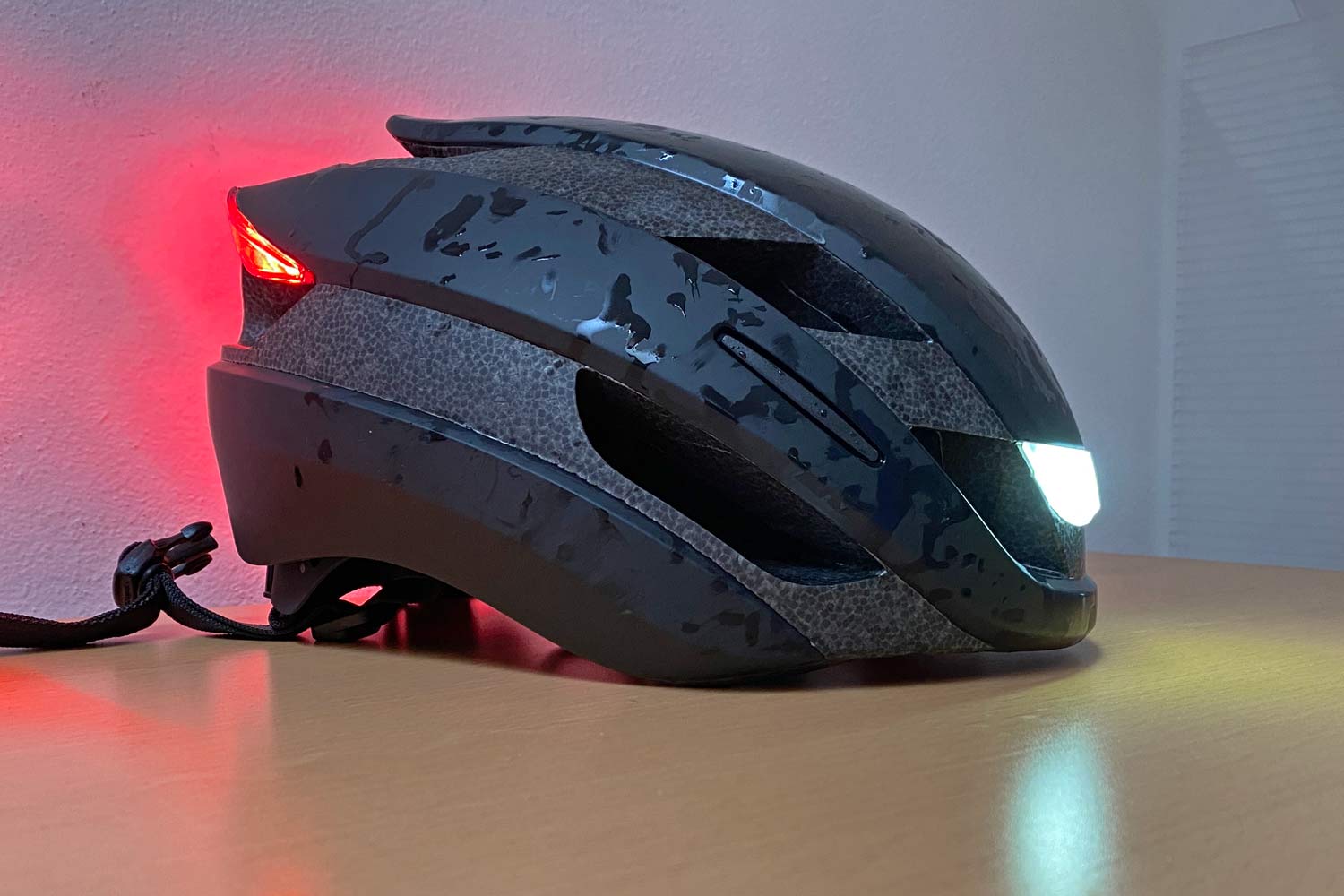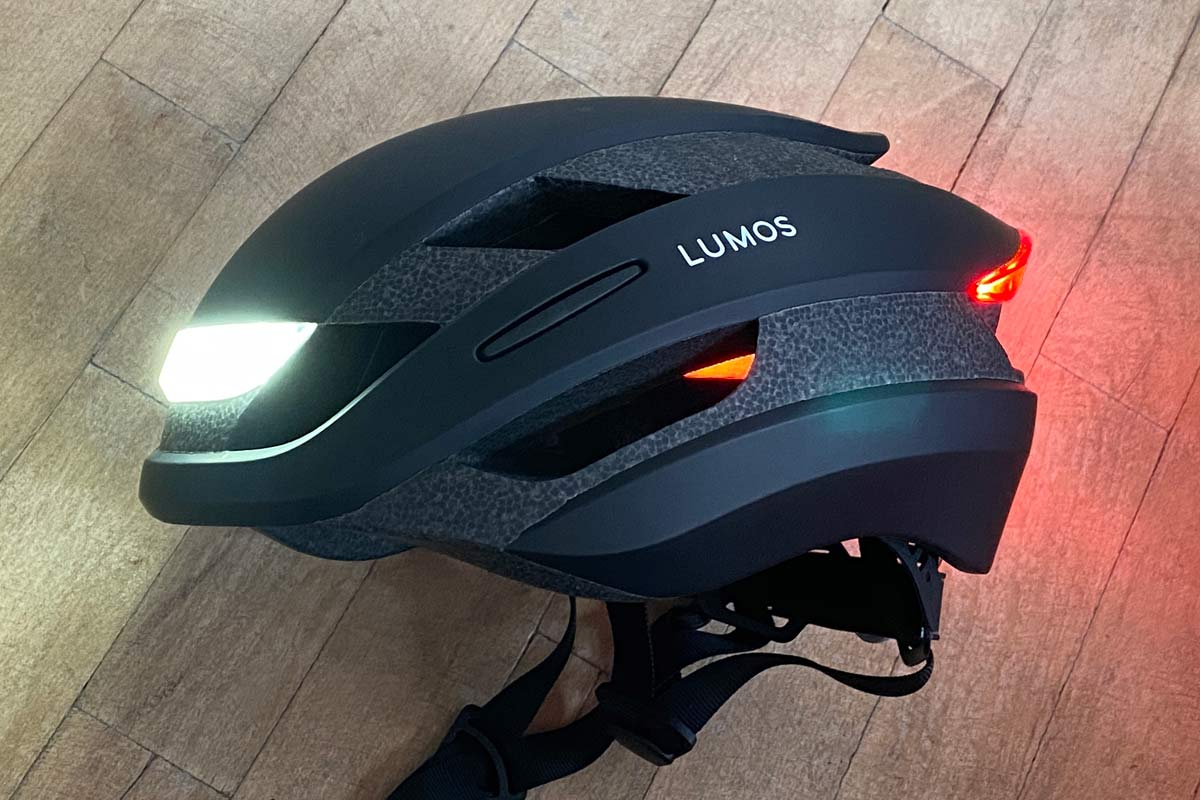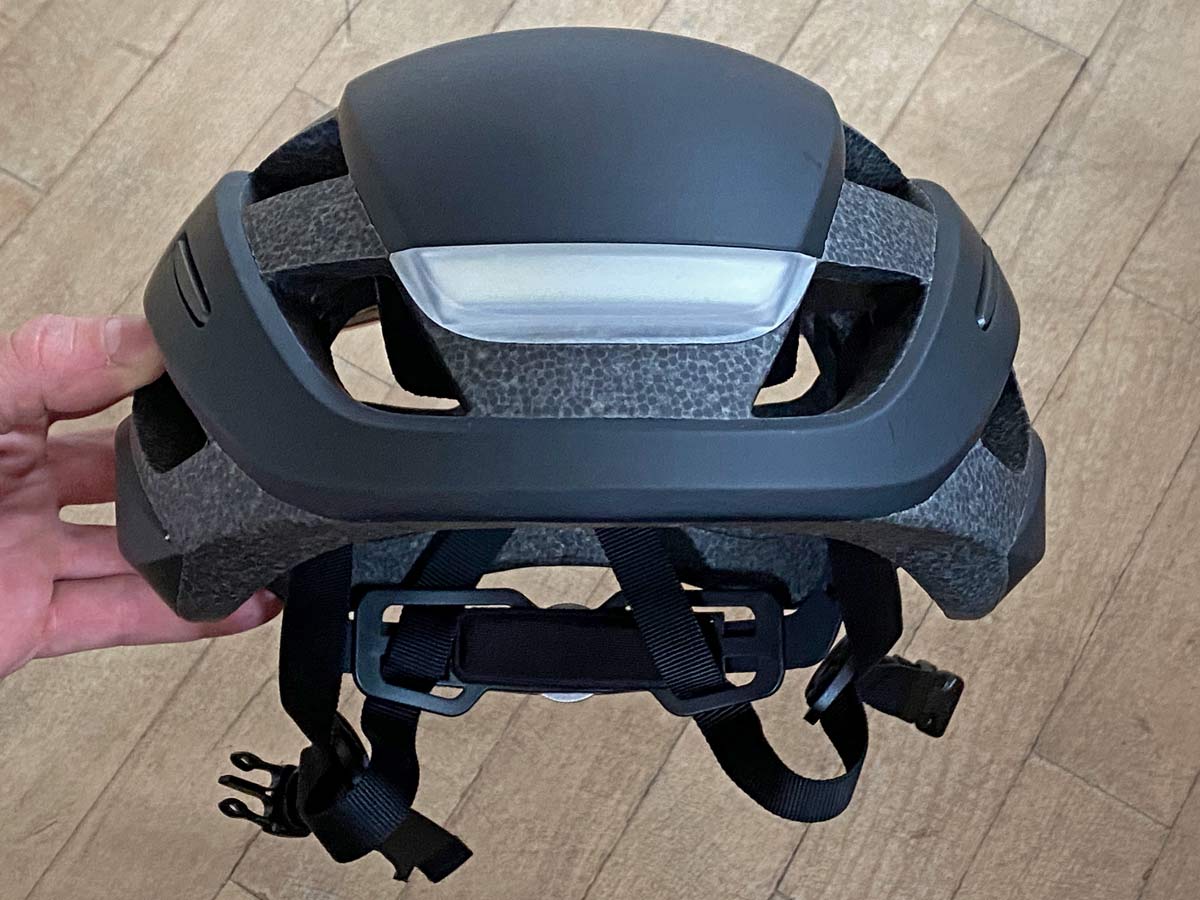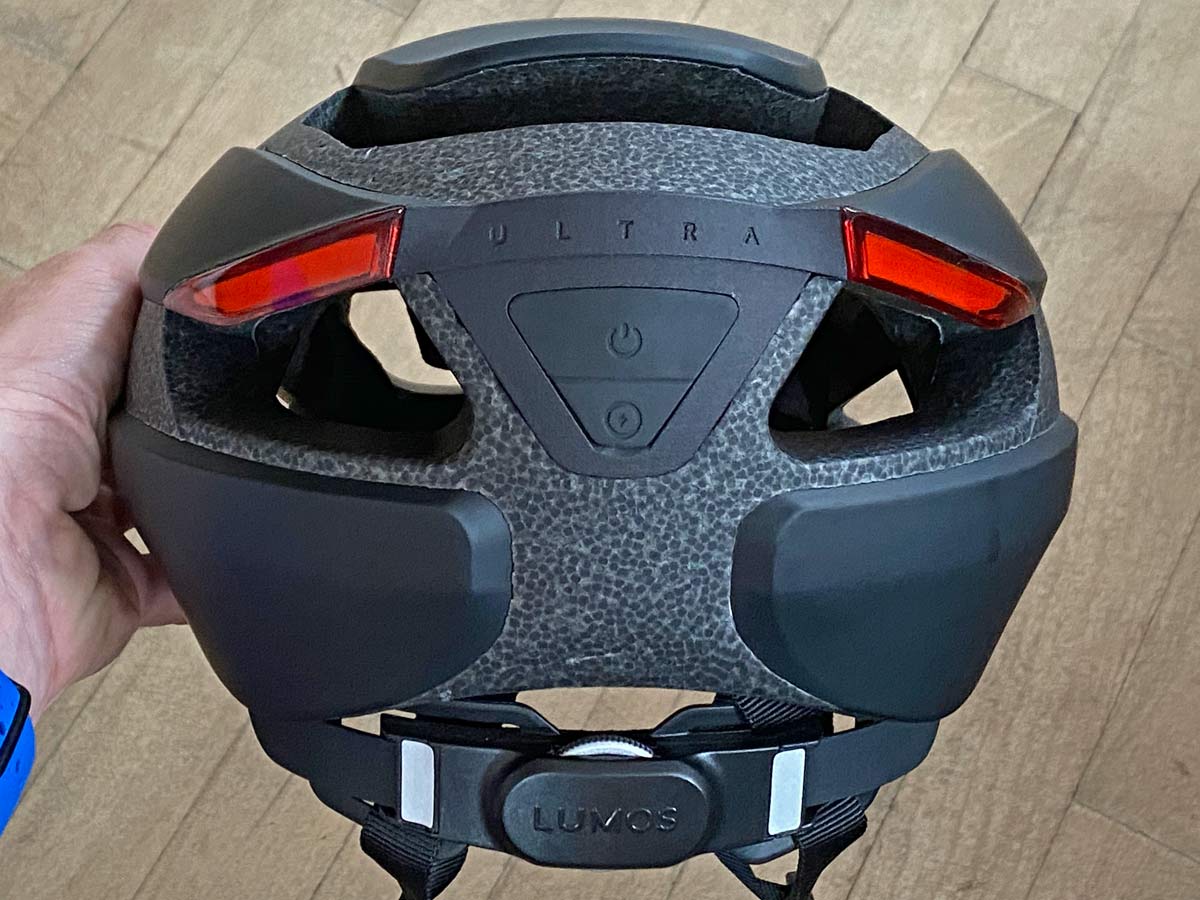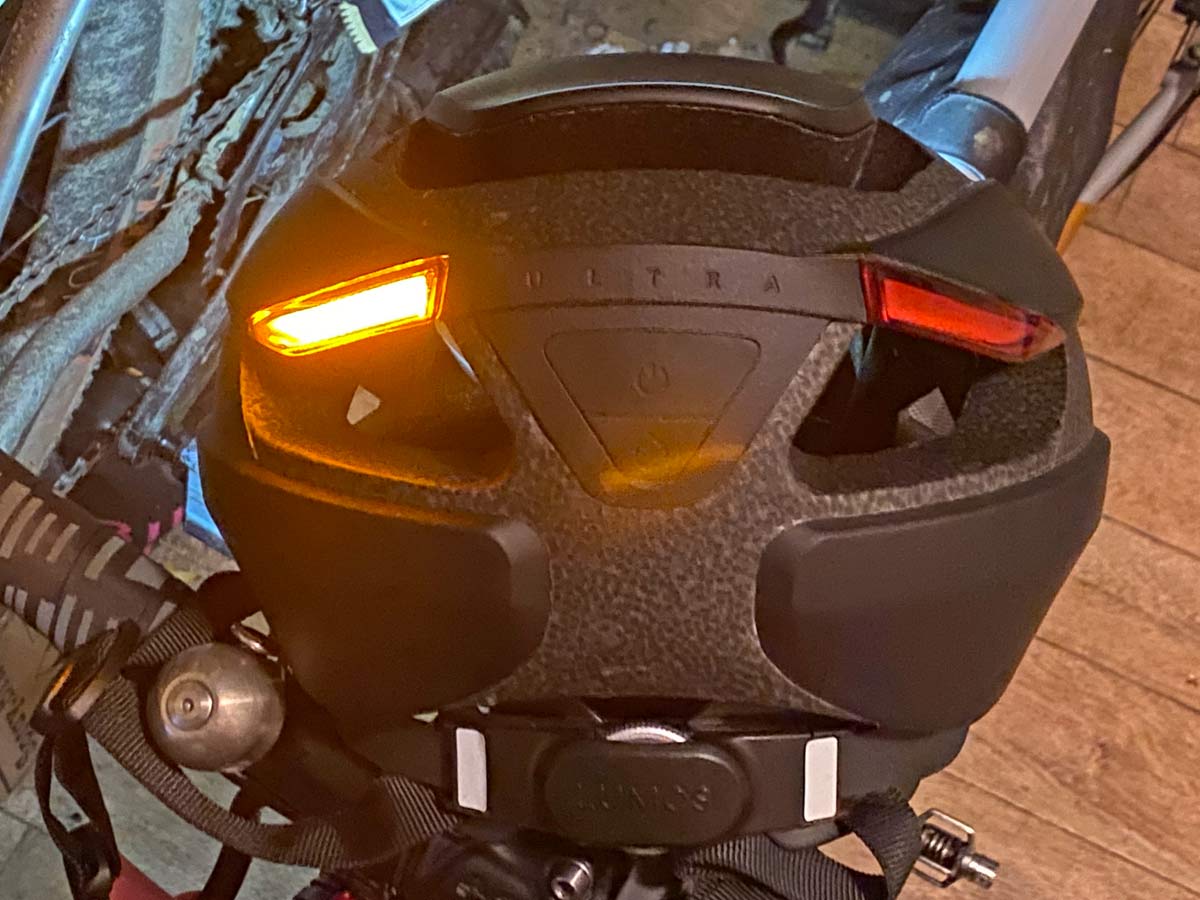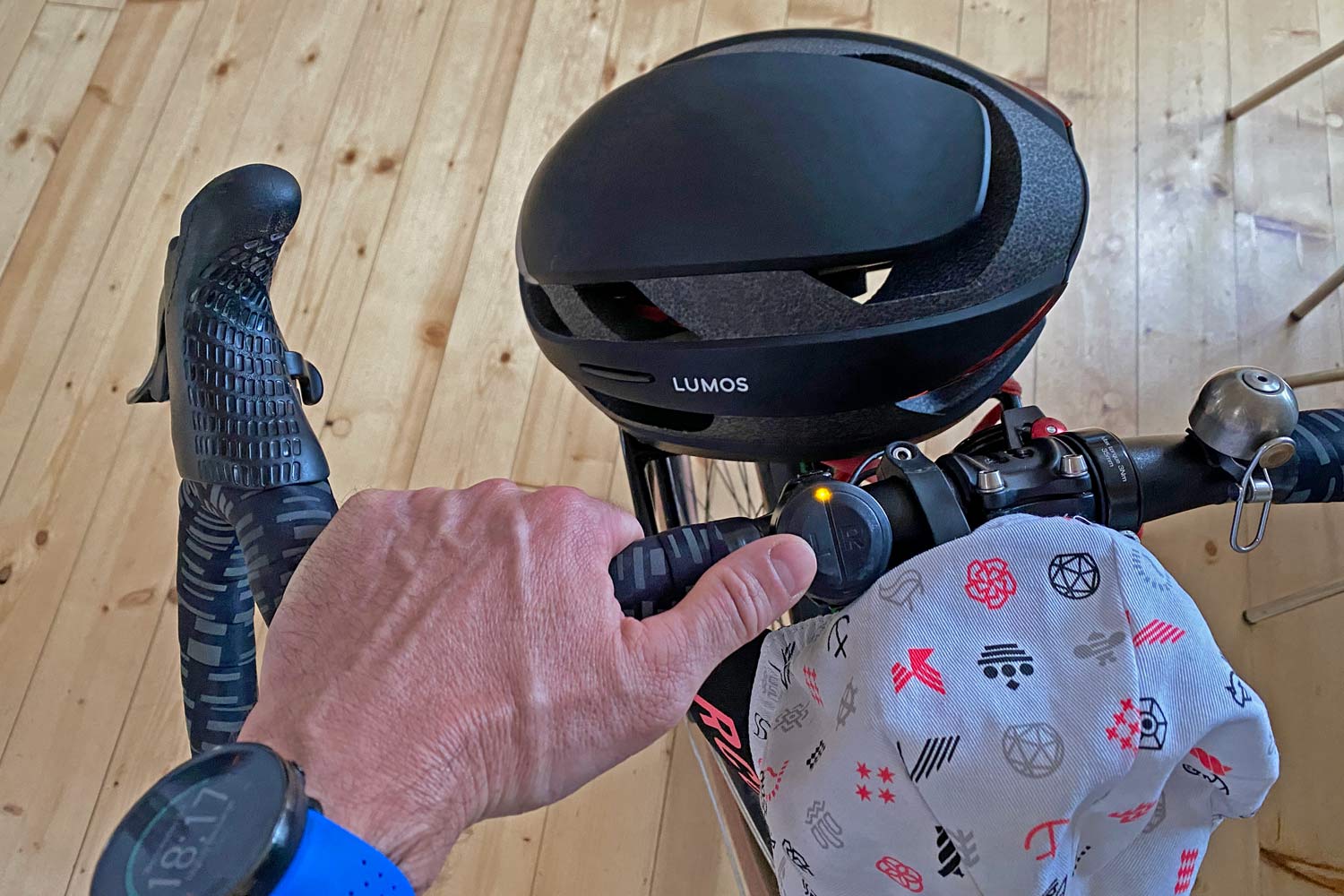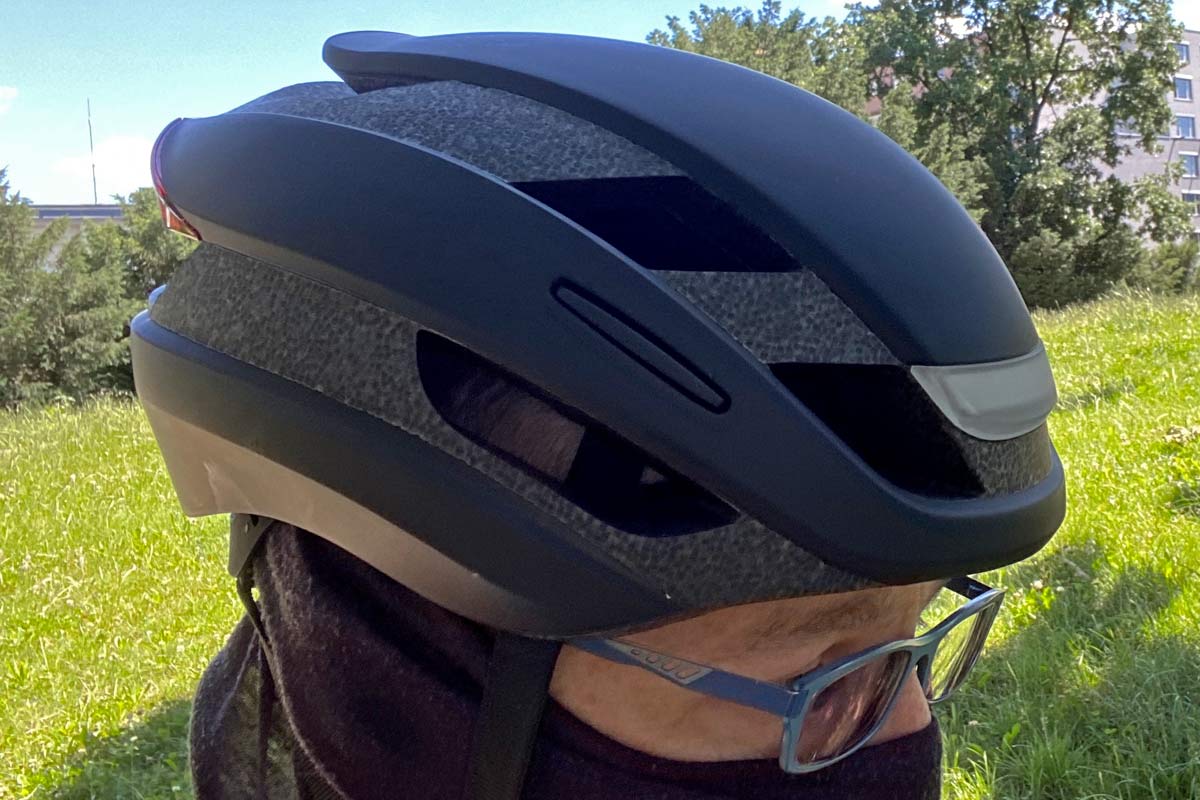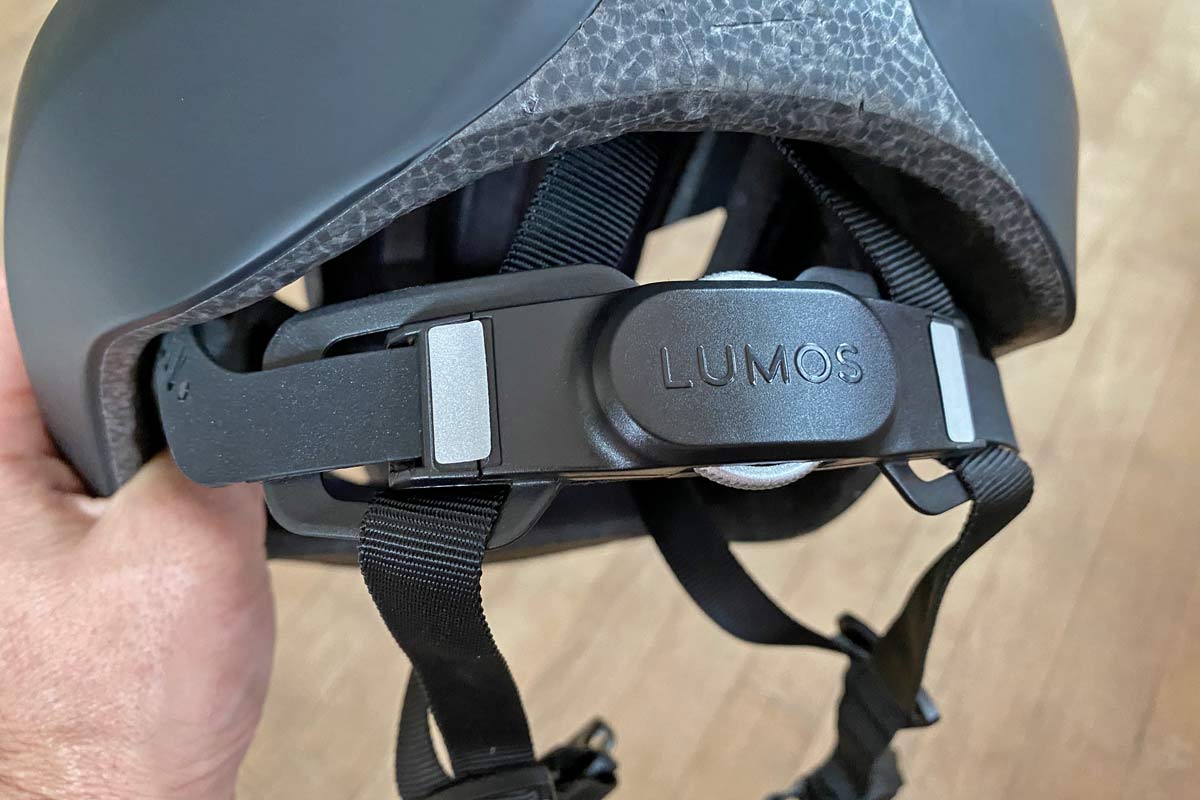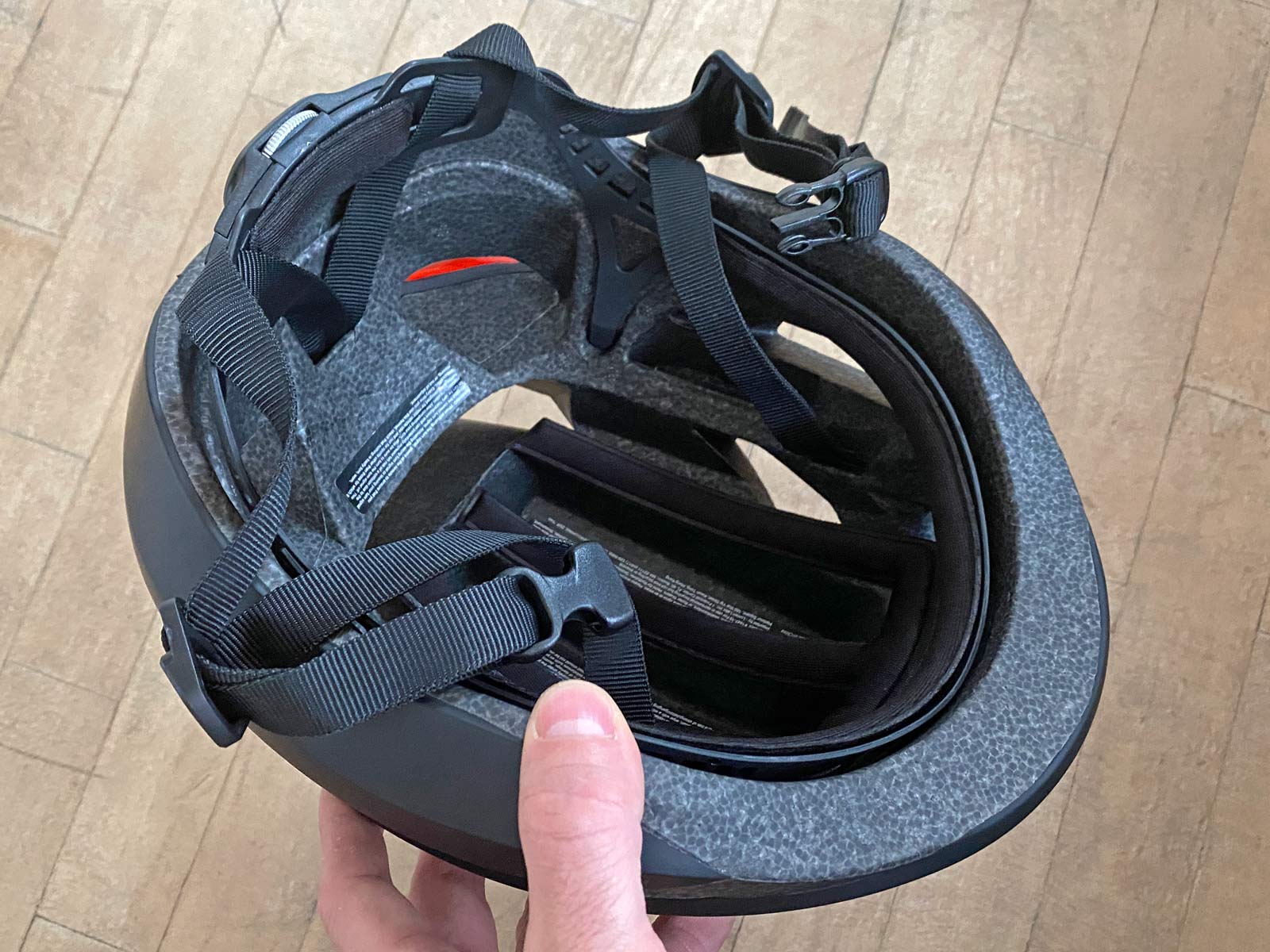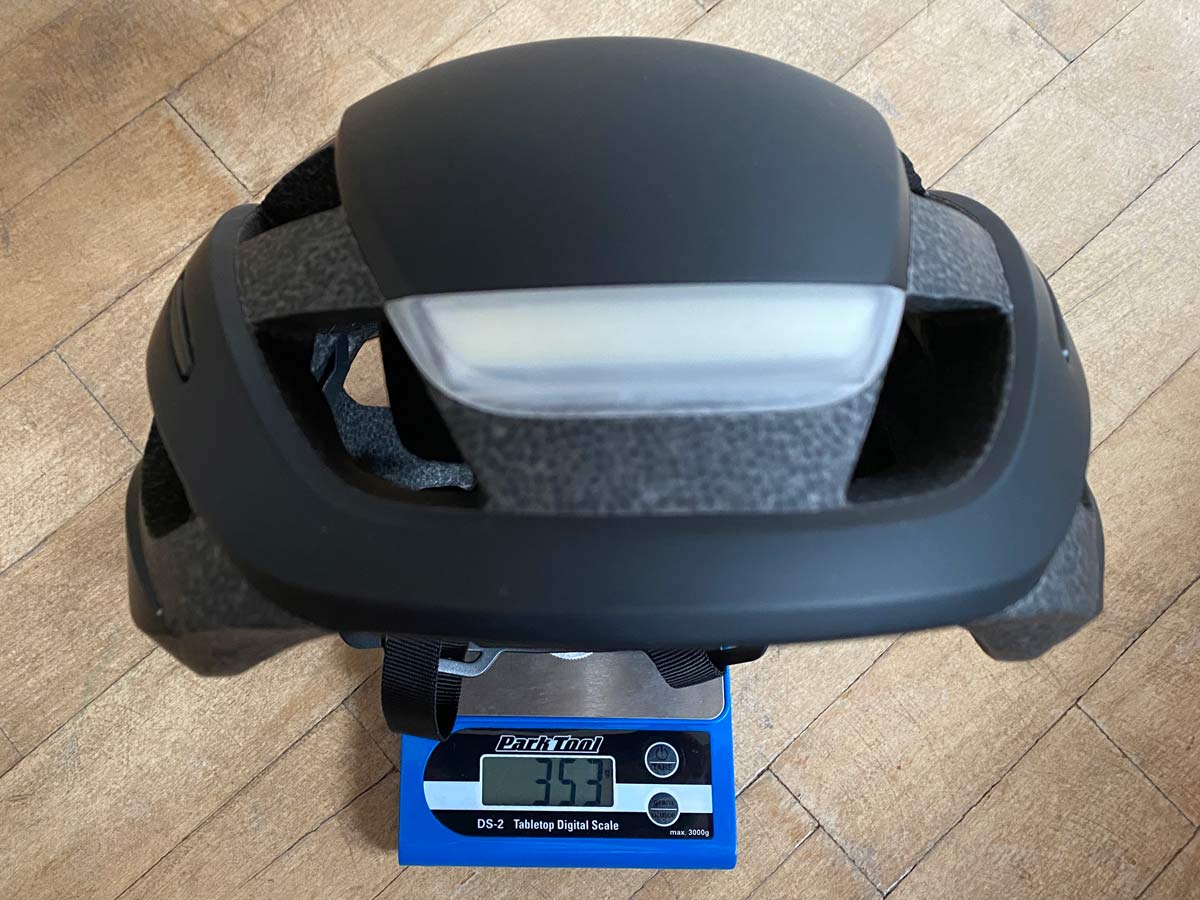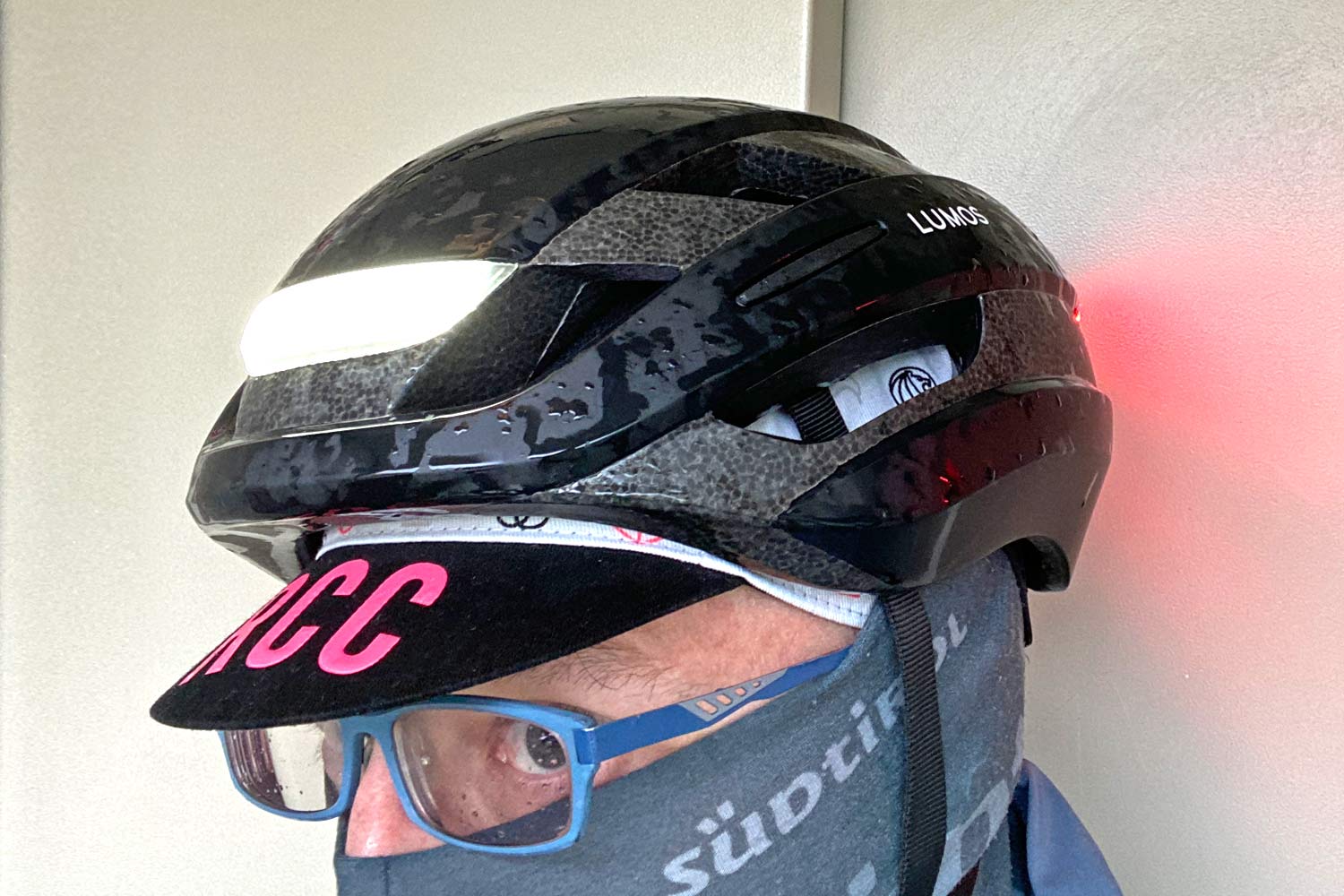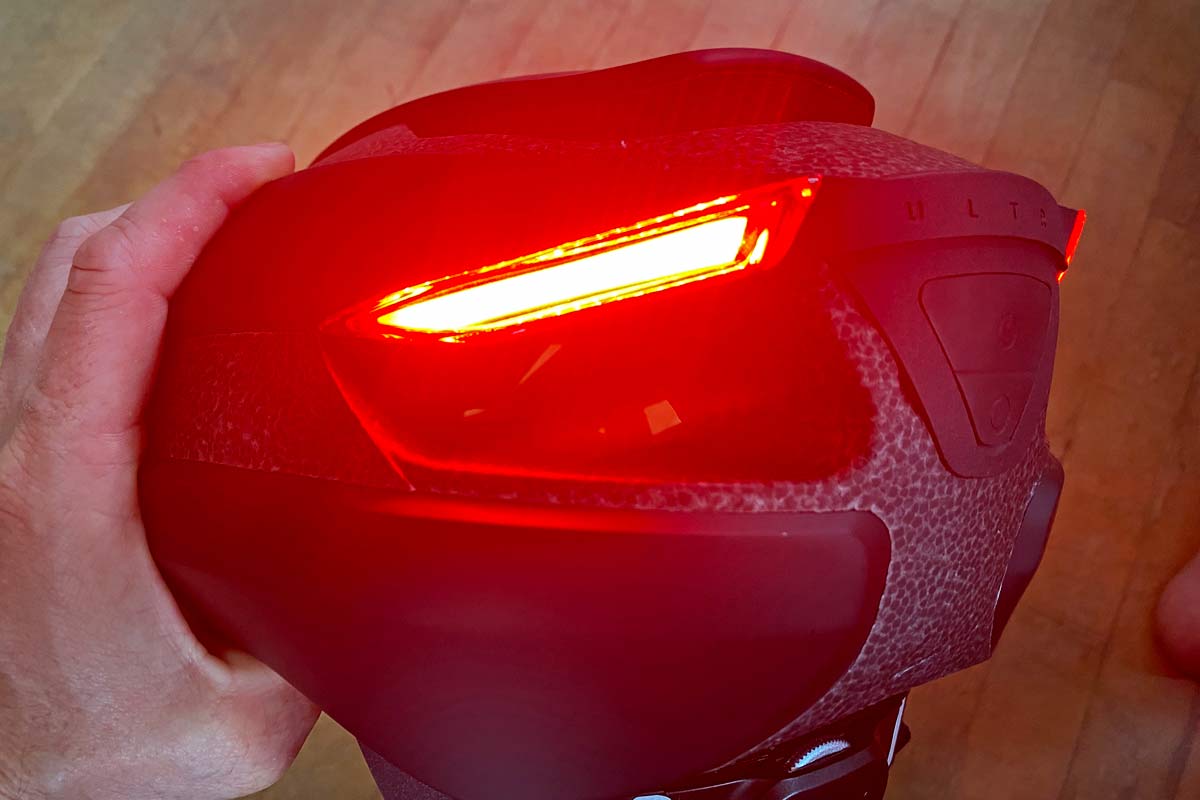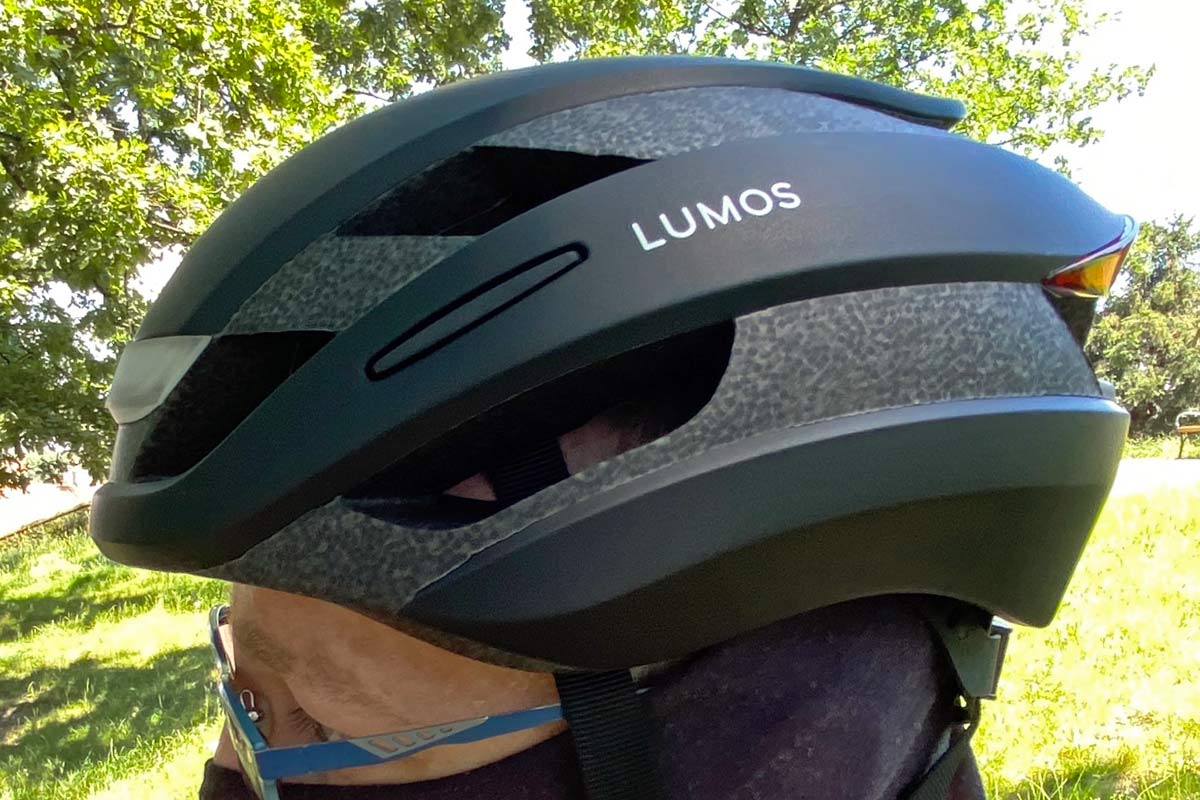The Lumos Ultra smart helmet is the “most backed product ever” in Kickstarter’s ‘Bikes’ category. I’ve been commuting to work and squeezing in afterwork rides with a pre-production version of the Ultra with its bright, integrated lighting and easy to use turn signals. And it really is a smart helmet that you’ll actually want to wear, with good fit & proper ventilation. Plus, it is still crowdfunding for another ten days, so you can pre-order one now for a great price, even with the option to add MIPS protection, too.
Lumos Ultra smart helmet with integrated lighting & turn signals
Lumos has been making smart helmets with integrated lighting & electronics for years, but their new Ultra is their first attempt at a proper performance road helmet that still packs in the safety & visibility tech. Again they’ve debuted the helmet on Kickstarter to crowdsource the launch – funding the project in 4 minutes, going on to raise $500,000 in 24 hours, now over $2million raised from 17,000 backers. Needless to say, it’s been a success. But there’s still time to get in on early pre-order savings, safe in the knowledge that Lumos has the experience to deliver on their crowdfunding promises. And that we’ve already been riding in the helmet, with almost all good things to say about it.
Meant to be an affordable helmet for urban commuter and recreational cyclists, the Ultra adapts Lumos’ smart safety tech into a performance aero road helmet.
Ultra – Tech details
The highlight of the Lumos Ultra is its integrated lighting – a bright front facing white light and two even brighter rear red lights. The lighting is specifically intended to be high up to offer the best visibility in traffic, while not being obstructed by mud or anything else on the bike.
Lumos doesn’t state the official output of the lights as they are still being finalized for production. But I would say my pre-production beta test helmet put out around 5-10 lumens front & rear based on similar LED lights I have used. That put it into a decent quality of visibility, but not really intended for any level of illumination when riding in the real dark of night.
Those lights use circuitry-on-board LEDs (30 white diodes, 34 red & 34 amber split between the two rear lights) for efficient light output, and built-in 1100mAh USB-rechargeable (through a covered port on the back) battery for up to 10 hours in high power mode, with even longer runtimes in one of two flashing modes.
What you don’t see at first glance, those rear circuit boards also have equally bright amber LEDs that flash as turn signals. You can use the small wireless Bluetooth remote that attaches to the handlebar (included) to activate the turn signals. Or it you have an Apple Watch, you can use the app with Gesture Recognition that controls the directional signals to sync with your regular hand signals.
On the inside the Ultra is a pretty conventional in-mold helmet, with EPS foam to absorb impacts and a 4-piece polycarbonate shell to tie it all together. All of the on-board electronics are IPX6 rated to stand up to riding in any weather conditions. And the helmet is crash certified to CPSC-C, EN1078 & AS2063 standards. There’s even a companion Lumos mobile app that helps you track when you use it, manage battery life, and adjust light settings.
The Lumos Ultra is available in three sizes to fit heads from 51-65cm, and in several different colors that are Kickstarter-only. The production helmet will be offered only in black, white & hi-viz yellow when it goes on sale in November 2020. The Kickstarter early bird support pricing is $79 for the standard helmet and $109 with MIPS anti-rotation liner ($99 & $139 retail pricing next autumn.) There is also an optional visor available as well.
Review: Riding in the Lumos Ultra smart helmet
I always liked the idea of helmets with integrated LED lighting, as it’s not uncommon for me to be riding home from work later than expected, or to go on a ride only to arrive home just after sunset. Even the simple integrated rear blinkie light on the Limar Ultralight Lux adds a bit of visibility with almost no downside – just a rechargeable battery would make it better. And the concept of ‘Smart helmets‘ always sounded good too… integrating lighting, signaling, maybe ride tracking, or crash detection too. But to be honest, besides short commuter trips in the city, smart helmets always seemed too bulky, heavy, and lacking in modern safety and ventilation performance (even previous helmets from Lumos.)
But from a styling perspective the new Ultra steps it up a notch, with a sleek aerodynamic profile and open ventilation on par with many mid-range aero road helmets that don’t include any extra safety tech.
So, what are the downsides of this smart helmet?
The Lumos Ultra is meant to be an affordable helmet that still integrates the smart lighting tech, so it has to cut a few corners – the non-MIPS version I’ve been using will retail for just $99, even cheaper now through the crowdfunding campaign. The retention system is pretty basic, but does use a fine-adjust dial in the back and comfortable wicking pads.
There is no vertical adjustment at the dial, and the straps are pretty basic mid-weight webbing with basic buckles. It all works well enough, and to be fair is on par with what I would expect from a $100 helmet (even without the integrated tech.)
Why should you buy a smart Lumos Ultra helmet?
The 353g real weight of our pre-production Ultra isn’t ultralight. But even for an aero road helmet, and especially for a helmet with integrated electronics, that’s a surprisingly light weight in the end. With 6 forward facing and 3 rear facing vents, there was enough airflow through the Ultra to offer plenty of ventilation for all but really hot summer riding. As a mix between commuting and afternoon rides, there was always plenty of airflow. And Lumos even tells us the final production version will be more streamlined for even better airflow.
The integrated lighting isn’t bright enough as a light source for riding in the pitch black of night outside of the city. But it’s as bright as many of the small blinkie lights I would normal strap to the bar or seatpost – just here I can’t forget the lights at home, and they are more visible in drivers’ line-of-sight.
In the course of riding I still haven’t gotten used to using the turn signal that regularly. The bar-mounted remote is easy-to-use and offers beeps to confirm that you turn it on and off. For sure, cyclists that have the gesture control with an Apple Watch will get more seamless turn signals. But it is still nice to use it those times where I think that extra visibility of a turn would be helpful/safer. As for battery life, my pre-production helmet has a smaller battery and still provides more than an hour on solid burn and at least two or three times that in flashing mode. That’s plenty of runtime for my daily commutes with a recharge every couple of days, and the production Ultra should run for more than 10 hours.
While there are plenty of helmets that beat the Ultra on weight, more refined fit, ventilation, or even more integrated tech. At a $79 pre-order now, or even better just $109 with a MIPS liner, this really is hard to beat as an all-rounder. I’ve never had a ‘smart helmet’ that I would think of taking on regular road or gravel rides, but the Ultra MIPS seems like an excellent balance of safety, visibility, fit & ventilation that is hard to argue with. I personally would love to have the Ultra MIPS as my daily commuter helmet, with the ability to safely head out for afterwork road & gravel rides with the extra visibility.
The only real drawback is that you need to put your pre-order in now via Kickstarter, then wait until November 2020 for it to ship to you. Lumos says medium/large standard & MIPS models will be the first to ship, with S & XL slated for early 2021.
